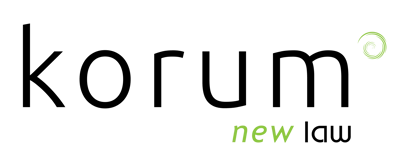LegalTech Soapbox: Boost your daily operations with Legito.

Ondrej is the CEO of Legito. He has master's degrees in law and computer science. Before founding Legito, Ondrej worked for 6 years in the legal industry as a lawyer. In 2014, Ondrej founded Legito which grew to one of the market-leading providers of document automation software, offering also tools for document lifecycle management, no-code custom application building, and electronic signature. Legito has offices in the United States, United Kingdom, Europe, and South America, serving hundreds of thousands of users worldwide.
1. Hi Ondrej, tell us the story behind Legito.
It all started in 2014, as a marketplace providing off-the-shelf automated templates of contracts and other legal documents for individuals and small businesses. At the beginning of 2018, we pivoted from a transactional marketplace to a pure B2B SaaS model, offering Legito as a platform where companies could automate their own legal and business documents. In 2019, we added document lifecycle management so our customers could manage their document workflows, approvals, and other process agendas. In 2020, we built tools for internal and external sharing and collaboration on documents. In 2021, we expanded Legito’s use cases with our no-code application builder that allowed our customers to manage additional areas related to documents such as vendors, tenders, procurement, legal entities, property, etc. In 2022, we completed the circle with our own electronic signature tool, Legito Sign, so our customers can now manage their documents exclusively in Legito throughout their entire lifecycle.
2. What are the services or products that Legito provides?
Legito is a no-code/low-code platform designed for compliance, HR, legal, operations, procurement, sales, and sourcing teams. It contains four core components: document automation, document lifecycle management, custom applications builder, and electronic signature.
3. How does the above optimise the daily operations of an in-house legal team/ law firm?
It helps legal teams, and any other teams cooperating with the legal team, to optimise every task and step in the process, allowing legal teams to move much faster whilst mitigating the risk of human error. For example, creating a first draft, approving or modifying the final internal version of a document, negotiating and signing a contract, plus leveraging the data to improve their company’s processes.
4. What do you believe will be the most significant change in how in-house legal teams use technology in the next 10 years?
I think there will be an evolution rather than a revolution. I would say that legal teams will be focused on fully or partially automating each type of task and every step of the processes they are involved in. It is going to be a step-by-step progression with a lot of steps still ahead of us.
Lily Evans and Ondrej Materna
Jan 29, 2024
Related Posts.
By: Lily Evans and Oscar Villanueva Cañizares
LegalTech Soapbox: Improve your daily operations with Nymiz
1. Hi Oscar, tell us the story behind Nymiz
We founded Nymiz in February 2020 as a spin-off from a company specialising in anonymising legal rulings for the Spanish judiciary. Shortly thereafter,..
By: Liam Dransfield
Anna Kim Legal Consultant | KorumLegal Senior Consultant
1. What made you leave the more ‘conventional’ legal practice to join the ‘Gig Economy’ as a..
